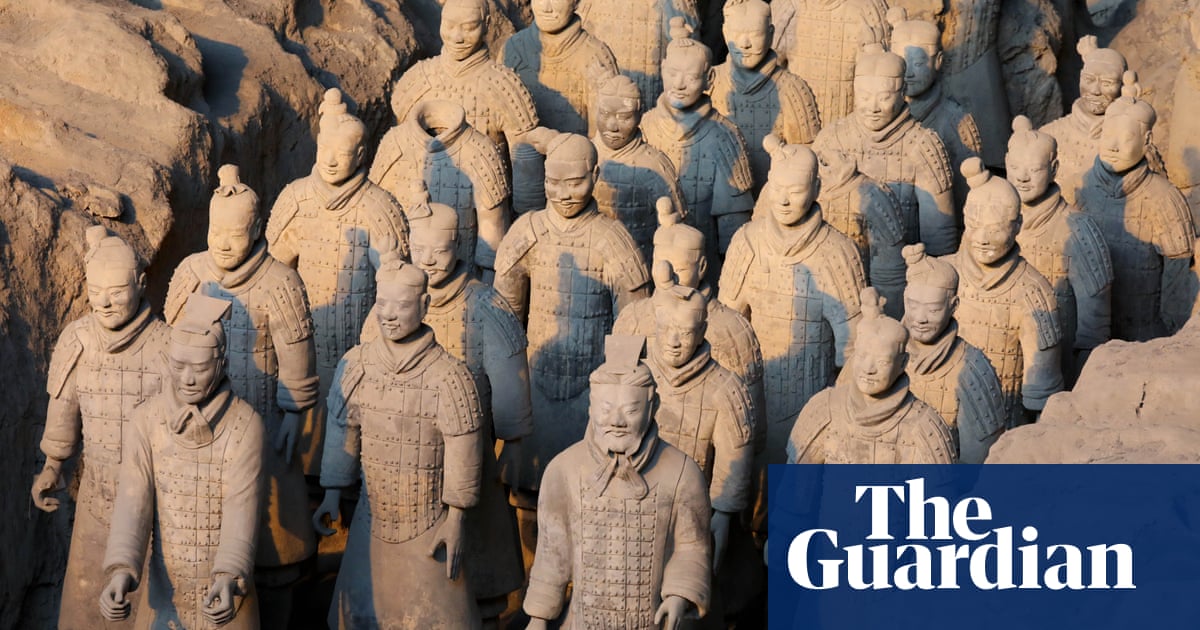Two thousand years ago, in a bid to conquer death itself, China’s first emperor Qin Shi Huang commissioned a city of the dead: a 49 sq km mausoleum guarded by an army of clay warriors, built to defend his tomb for eternity.
When farmers near Xi’an unearthed the first clay head in 1974, they cracked open one of humanity’s greatest archaeological mysteries, with more than 8,000 Terracotta Warriors discovered over the last 50 years. Now, fragments of that dream of immortality rise again – this time inPerth, where the largest exhibition of the Terracotta Warriors ever staged in Australia will head later this year
Opening on 28 June atWA Museum Boola Bardip, Terracotta Warriors: Legacy of the First Emperor promises not just a glimpse into ancient China, but a sweeping journey across its foundations in more than 225 artefacts, many of which have never left China.
Sign up for the fun stuff with our rundown of must-reads, pop culture and tips for the weekend, every Saturday morning
“It’s hard to put into words how significant this is,” said Alec Coles, CEO of WA Museum Boola Bardip. “Seventy per cent of these objects have never been to Australia before, and 40% have never left China.”
“For me, this is the eighth wonder of the world,” he said. “There is nothing like it anywhere.”
Developed in collaboration with the Shaanxi Cultural Heritage Promotion Centre and the Emperor Qin Shi Huang Mausoleum Museum, Terracotta Warriors features 10 of the lifesize clay soldiers – the maximum number permitted to leave China – each weighing up to 180kg and standing 1.8m tall. Meticulously crafted from separate parts, each warrior was finished with a uniquely modelled face, capturing the individuality of a living army.
Eight warrior sculptures last came to Australia in 2019 for the National Gallery of Victoria’s showTerracotta Warriors: Guardians of Immortality.
WA Museum Boola Bardip’s upcoming exhibition will explore the story of China’s first emperor and the world he sought to recreate in death: bronze vessels, ancient chariots, gilded belt hooks, painted cavalry figures and rare gold ornaments, some so newly unearthed they’ve never been displayed anywhere before.
“Qin Shi Huang not only unified China, he standardised measurements, currency and even language – and all of this decades before the Rosetta Stone was carved in Egypt,” Coles said. “You have to think about the extraordinary impact he had in such a tiny period of time. The Qin dynasty lasted only 15 years, but it changed China for ever.”
Sign up toSaved for Later
Catch up on the fun stuff with Guardian Australia's culture and lifestyle rundown of pop culture, trends and tips
after newsletter promotion
There is an enduring enigma to Qin’s story:his tomb remains unopened, its secrets sealed beneath a great earthen pyramid. Ancient historians described a vast underground kingdom complete with rivers of mercury and deadly booby traps – legends that the Terracotta Warriors exhibition will reimagine in an immersive final installation.
“The patience and respect shown in leaving the tomb unopened is extraordinary,” Coles said. “Who knows what secrets still lie buried?”
Among the highlights is a bronze swan, cast using the ancient lost-wax method and discovered near a pleasure garden meant for the emperor’s afterlife. “It’s absolutely exquisite,” Coles said.
Terracotta Warriors will also frame Qin’s reign within a longer narrative arc, from the preceding turbulent Warring States period, which ended with the start of the short-lived Qin dynasty in the second century BC, through to the rise of the Han dynasty, which lasted four centuries. In a world riven by political tensions, the exhibition will also gesture toward the enduring power of cultural diplomacy.
“Cultural connections are important at any time, but perhaps especially now,” Coles said. “They transcend politics. Building stronger relationships and understanding is paramount.”
“I hope visitors experience the same wonder that I did,” he added. “The beauty, the rarity, the achievement. And an appreciation of what Qin Shi Huang created, not just for China, but for human history.”
Terracotta Warriors: Legacy of the First Emperor runs at WA Museum Boola Bardip from 28 June until 22 February 2026
